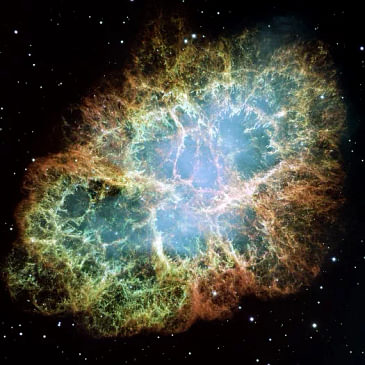Welcome to the My Nuclear Life podcast! In this episode, host Shelly Lesher speaks with Dr. Artemis Spyrou, an experimental nuclear astrophysicist and professor at Michigan State University. Artemis has spent her career studying nuclear reactions that take place in stellar environments using experimental techniques. She has extensively published on the topic and has recently been named a fellow of the American Physical Society.
To start off, Dr. Artemis Spyrou shares how the origin of all elements is closely linked to the story of energy production. (Ex: stars, sun) People have always wondered where we come from, and therefore, have studied what produces energy and chemical reactions since the 1900s. In the early 1900s, they discovered radioactive isotopes which decay heat. The center of the sun is a giant radioactive source and it’s emitting energy. They found heavy elements and this discovery started to go in the right direction. People can see lines or elements in the sun by seeing a particular energy coming from different elements. For example, if there’s hydrogen from the sun, that will absorb some of the energy at exactly the right energy or wavelength. People study these absorption lines from various elements in the lab and they can see the light coming to know what elements are present.
In 1910, Ernest Rutherford observed and studied reactions and he found alpha, beta and gamma particles. He found that alpha is a helium nuclide. He would shoot the alpha particles at different elements to see what would happen. He measured the mass and found that helium is lighter than 4 hydrogens together. If we fuse them together, we are producing energy and maybe this is what is happening in the sun. Each discovery is important in this step-by-step process. They found it’s not enough to have those two hydrogens fuse together because of electrostatic repulsion, so they need more energy to overcome the barrier. The next discovery was in 1928 by Russian George Gamow studying quantum mechanics. He said there was a small probability that those two will fuse at a lower energy and it’s still possible for protons to have that fusion. In 1929, two physicists used this discovery from Gamow and figured out a realistic way of producing energy in our sun. They made a new element called helium and these two topics are linked together. In the late 1920s, neutrons had not been discovered yet. They knew helium was bigger and that if you add 4 hydrogens, you make more energy. Then, when you get two hydrogens, you make two heliums so it’s not bonded and immediately breaks apart. You need something else to make it to helium. If it was possible that the two hydrogens could fuse together to make helium, the process would go so quickly. If you fuse all of this together quickly it explodes and makes a deuteron, which is a rare process.
There were two major opinions– first, all of the elements were produced during the big bang and spread across the universe. Second, Fred Hoyle suggested that only the lightest elements were made in the big bang and all the heavier ones were made in the stars. These are theoretical and need experimental verification to support one or another. In 1952, there were new advanced telescopes to make all these discoveries and Paul Merrell discovered an element called technetium, which is an artificial element so it did not occur naturally. If it was produced during the big bang, it should all have decayed away already. There are three explanations for this- it was actually a stabilized form of it, a star is making this as we speak or it was made by another star. We are still discovering new things and found out the element was either due to the second or third option with stars. The field of nuclear astrophysics showed the proof that this was happening.
Lastly, Dr. Artemis Spyrou says she studies this out of curiosity and to understand how this all works. There is also a direct connection between what is produced and what we are made of. In 1957, there was the first comprehensive description on the origins of the elements, known as the “B2FH.” The main idea in this paper is correct saying that we have the protons fusing into helium and they produce energy. This energy helps to balance the gravitational pull of the star and changes hydrogen to helium. When you run out of hydrogen or fuel in the center, it’s a higher temperature to react. Then, the star does collapse a little bit more and the helium starts to fuse. Fusion reactions need neutrons at lower masses and neutron induced reactions occur for heavier masses. Since then, it has been discovered that there are two neutron processes- slow neutron process and a rapid neutron process. The S process is stable, but the R has rare nuclei that only live for a few milliseconds and they just started making them in the lab. The last 10 years had advanced telescopes, which showed observations of stars that we can’t produce with this scenario, which brings us back to the drawing board.
Links:
Learn more about Artemis Spyrou.
Visit the My Nuclear Life website for information, or email us at mynuclearlife@protonlife.com
My Nuclear Life now has a Patreon page, where you can subscribe for bonus content!





